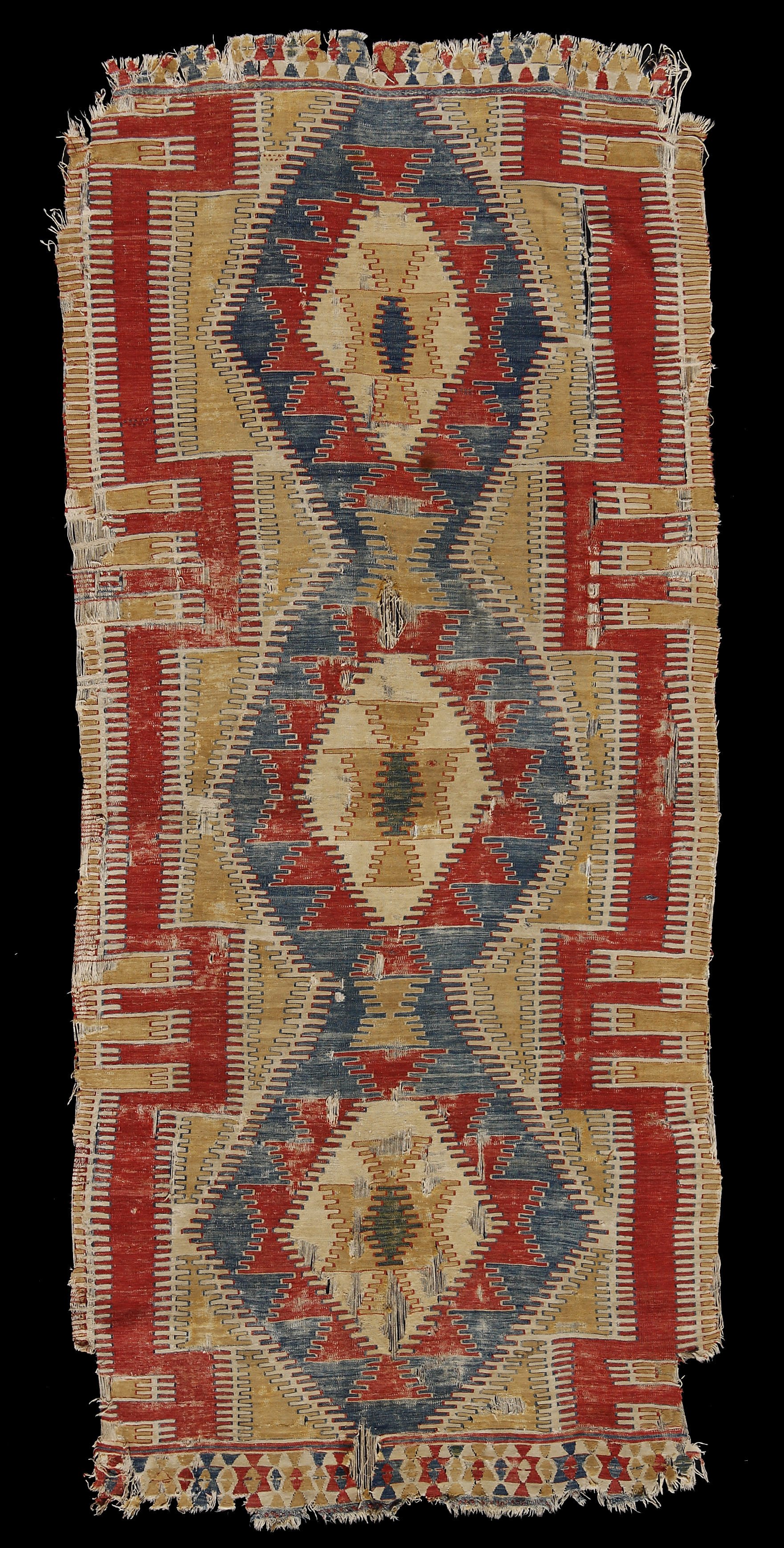Anatolian Kilim
Afyon-Kütahya-Eskişehir
West Central Anatolia
Woven in one piece
Egret village (Afyon)
18th/19th Century
165 x 405 cm
The composition of central medallions with fingers like extensions are typical for the kilims woven in this village. Called Parmakli, or fingers–like outlining of the field motifs. This tribal group from the Phrygian Highlands in Anatolia refer to themselves as “yerli”, from “yer”, meaning the ground of Anatolia and they disassociate themselves from the local Turkmen, or newcomers, of the area. According to Balpinar the people and kilim designs of the Phrygian highlands indicate a continous kilim weaving tradition in Anatolia dating back at least 3000 years and possibly more.
(Balpinar-Hirsch,1985).
RELATED
Hali, 1985 , n.26, pp. 12-17
Hali, 1986, n.31 , p. 79
Hali, 1990 , n.53 , p. 176
Hali, 1991, n.51, p. 175
B.BALPINAR-U. HIRSCH, Flatweaves , Vakiflar Museum Istanbul, 1982, p.206, pl. 76
I. VOK-U.HIRSCH, VOK COLLECTION Anatolia and other flatweaves from Anatolia,Munich, 1997, n. 46
J.MELLAART- U.HIRSCH, B.BALPINAR, The Goddess from Anatolia, Milan, 1989, vol.IV, pp.49-54, pl.80-89.

